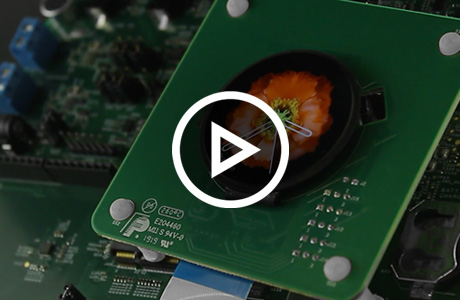Imagine you’re developing a graphical user interface for an embedded device, like a smartwatch that needs to display fitness data, notifications, and real-time updates. The challenge? Delivering a smooth, responsive, and power-efficient user experience while working within the device’s hardware constraints.
Selecting a GUI solution based solely on cost or features can lead to performance limitations, integration challenges, and scalability issues down the line. To ensure long-term success, developers need to carefully assess the factors that will impact product performance, user experience, and future enhancements.
So what defines an optimal GUI solution for embedded systems? Whether designing for wearables, industrial applications, home automation, or automotive displays, here are the key aspects to consider.
Key Factors in Choosing a GUI for Embedded Systems
The design and implementation of a GUI for embedded systems involves many tradeoffs that can greatly impact the success of the product. To make informed choices and ensure the long-term success of the product, it’s important to carefully consider the following key factors when selecting a GUI solution for embedded systems:
- Optimizing Memory & Power Efficiency
Embedded devices, particularly battery-powered systems, require efficient memory usage and power optimization to maintain stability and performance. A lightweight GUI ensures smooth operation without overloading system resources, extending battery life while delivering a fast, fluid user experience.
- Font & Graphics Rendering Capabilities
A well-designed GUI should support various font types, vector or raster graphics, and hardware acceleration. Vector graphics allow scalable UI elements, while hardware acceleration ensures smooth animations and real-time responsiveness. These capabilities contribute to a polished, high-quality user experience.
- Design Flexibility & Adaptability
Design changes are inevitable. A flexible development approach using CI/CD pipelines allows teams to quickly adapt to UI updates, reducing delays and preventing budget overruns. Agile methodologies and automated testing ensure that enhancements can be made without disrupting the entire system.
- Seamless Integration with Hardware & Middleware
A GUI must work harmoniously with the device’s hardware, sensors, and communication protocols. It should also integrate with middleware and cloud services, enabling real-time data exchange, remote monitoring, and process control.
- Portability Across Different Devices
With IoT devices constantly evolving, ensuring GUI portability is critical. A cross-platform solution allows developers to reuse GUI assets across different devices, maintaining consistent branding and user experience across product lines.
- Long-Term Maintainability & Upgradability
To future-proof a product, a GUI should be easy to maintain and update. Modular components, clean code, and best testing practices enable efficient software updates. Additionally, over-the-air (OTA) updates.
Solve your GUI Development Challenges With an Optimized Framework
While some GUI solutions, such as Qt, offer robust capabilities for complex projects, they can come at the cost of high memory and power consumption due to running on Linux environments. On the other hand, lighter solutions may be more cost-effective for smaller projects, but may lack the ability to scale and support long-term profitability.
MicroEJ’s GUI solution is designed to address the unique requirements of embedded systems, offering both high-performance and low-power capabilities for all types of microcontrollers. With its optimized and lightweight architecture, MicroEJ enables developers to create rich, fast, and responsive embedded GUIs that can provide an immersive user experience. Additionally, MicroEJ’s solution is highly flexible and customizable and allows for seamless integration with other embedded systems components, making it an ideal choice for developers looking to create high-quality embedded applications.
With its container-based development environment, MicroEJ’s GUI solution is highly portable on a wide variety of hardware components and enable over-the-air updates for continuous integrations and improved user experience.
Choosing the Perfect GUI Solution for Your Embedded System: Your Guide to Success
Selecting the perfect GUI solution for your embedded system can make all the difference between your project being a hit or a miss. Here are some things to keep in mind: First and foremost, think about your system’s hardware and middleware requirements to ensure compatibility with the solution. Then, dig into the solution’s features, like how easy it is to develop with, its customization options, scalability, performance, and low-power optimizations. Don’t forget to consider long-term maintenance, portability, and overall value. With these considerations in mind, you’ll be on your way to choosing a GUI solution that provides an engaging and seamless user experience while meeting your specific project needs.



